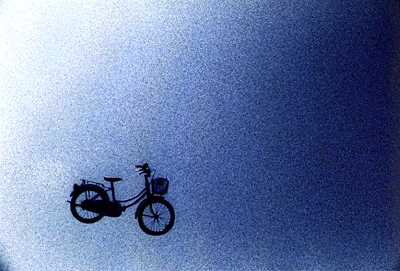
|
To mimic the movements of plants and animals. To identify with wind and water. In this way, through calligraphy, too, we can uncover the various linkages of life-information that connect ourselves with the world. (Basho's comment concerning the pine and the bamboo can also be regarded as relating to Kukai's message of intercommunication.) An ordinary tomato plant can reveal to us a means of perceiving the future of life (and not only human life). In a single letter, we can discover a bustling interface of the manmade and natural worlds, where life-information and cultural information meet. Words and letters, these so familiar information systems, are artefacts. But they are also more than mere artificial signs. They possess a coevolutionary and dynamic rapport with the autonomous genetic information system. In Japan, we have the tradition of practicing our calligraphy at the time of the New Year. Today, however, the Japanese don't know whether to practice the art of the brush or sit before their PC screens. Is there a way for us, and for all the people of the world, each with their own languages and writing systems, to rediscover the true power of the word? |





